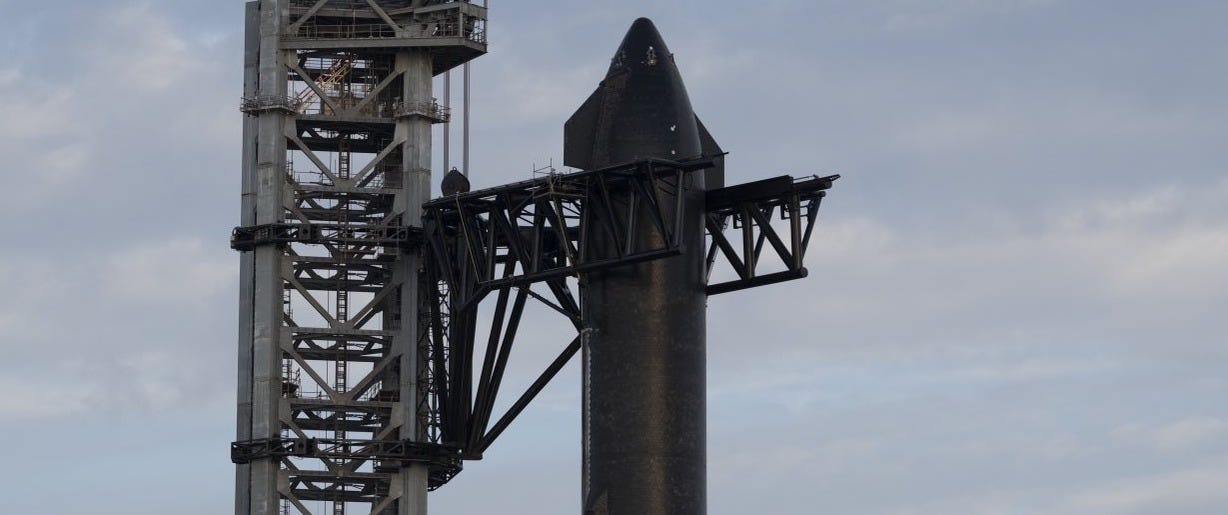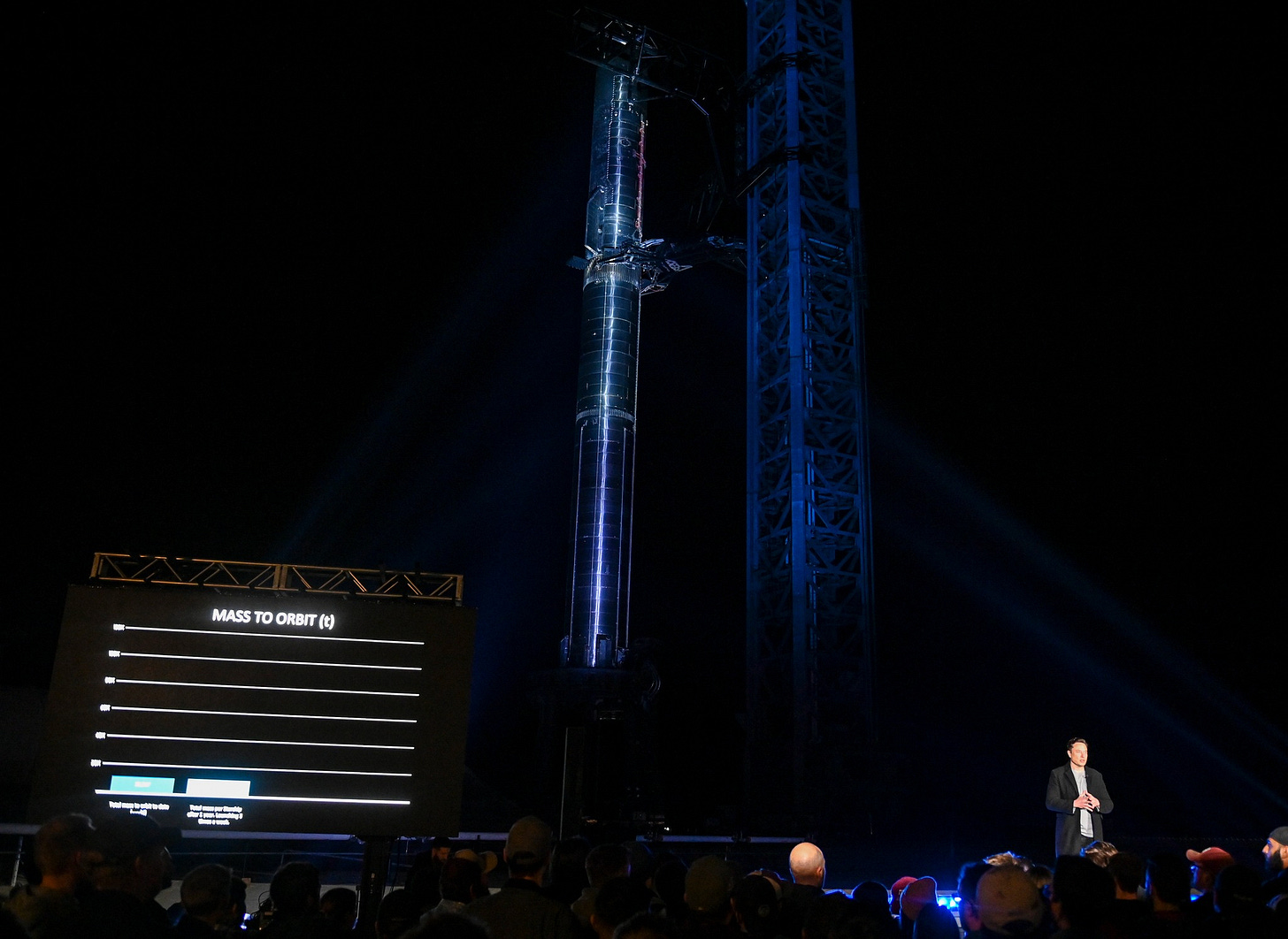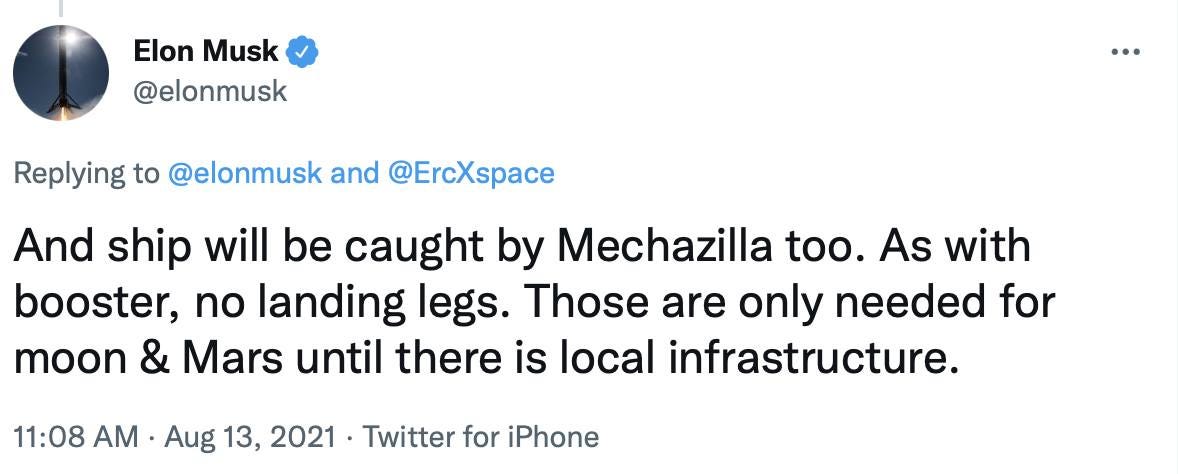
Thanks for finding Full Throttle. The newsletter will be delivered twice a week for free once you subscribe here.
The Starship is stacked in South Texas and it is big. The first stage Super Heavy booster rocket is topped with its second stage, the Starship. Together the two stages reach nearly 400 feet into the sky.

Elon Musk gives an update on SpaceX's Starship program in Boca Chica, Texas. (Credit: Jonathan Newton/The Washington Post via Getty Images)
With the rocket bathed in spotlights last week, SpaceX CEO Elon Musk made several predictions about Starship and highlighted what he calls the stage zero. Stage Zero refers to the tower that holds Starship and the catcher that will be used when vehicles return after launch or flight.
Musk told a crowd of reporters and dignitaries at his Boca Chica “Starbase” that he hopes to fly this massive rocket as early as next month. That is, if he gets FAA approval. Musk suggested he has gotten a nod approval may be coming. But Musk is known for timelines and predictions that sometimes need adjustments. If he doesn’t get approval for a Texas launch, Musk will move to Cape Canaveral where SpaceX does have permits. That will delay a test launch to at least the end of the year.
Animation of a Super Heavy booster returning to pad and being caught. (Credit: SpaceX)
Musk isn’t building just a reusable rocket and spaceship, he says it must be a rapidly reusable rocket. He’s talking about three spaceflights a day down the road.That kind of pace, Musk suggests, means a flight could cost as little as $10 million dollars. A flight today on the much smaller SpaceX Falcon-9 costs more than $60 million.
There are still plenty of problems to solve including the Raptor-2 engines that will power the two stages. There will be 42 engines as of this writing. Musk says they are a challenge because the chamber where fuel is ignited, ‘really wants to melt.”
Test firing of a Raptor II engine. (Credit: SpaceX)
Let’s talk stage zero. Spaceflight, like all flight, is a trade-off between weight and thrust. The more weight you want to move, the more thrust is required. Aerospace engineers are always trying to reduce weight. That is what Musk, as Chief Engineer at SpaceX, is trying to do with his stage zero. He doesn’t want to add landing legs to his super heavy booster. It's just too much weight. The solution is that when the booster returns to earth it won’t have any landing structure. Instead, it will be caught by the tower. Same for the Starship, unless s ship is designed to land on the moon or Mars.
Musk discussing the challenges of catching space vehicles. (Credit: SpaceX)
Musk told his audience this is a big deal and a big challenge. He wanted to emphasize that, “the whole launch system, which is basically stage zero, is I'd say, as complex and difficult as either the booster or the ship.”
The complexity comes in trying to grab these vehicles as they return to the launch system. The catching arms must deploy at the right time to grab the vehicles before they hit the ground. Musk has even given this system name. It is Mechazilla, and the arms that lift and catch vehicles have been dubbed chopsticks.

Musk Tweet on his hopes for his zero stage structure.
This big rocket and Starship, if they work as designed, will allow SpaceX to deliver a lot of payload to space, the moon, and possibly Mars.
Mars remains Musk’s ultimate goal (his calendar is often optimistic). He believes humans need to be a multi-planetary species as an insurance policy. He told his audience, with the massive rocket in the background, “to be frank, civilization is feeling a little fragile these days. And like I said, I'm an optimist but I think we got to protect the downside here and try to build that city Mars as soon as possible and secure the future of life.”
The Musk "sales pitch" to go to Mars. (Credit: SpaceX)
Then he made a challenge to those who want to explore and would consider heading to the red planet. “The sales pitch for going to Mars is that it's going to be cramped, dangerous, difficult. Very hard work. You might die.” Musk said. For those interested in traveling to Mars, a reality check from Musk, “Mars is a fixer upper of a planet,” he said.
Flyby of the SpaceX ground tower at its Starbase in Texas. (Credit: SpaceX)
If you make the trip, he has a stage zero to catch you when you return to the home planet. If it works.
(Cover photo credit: SpaceX)




